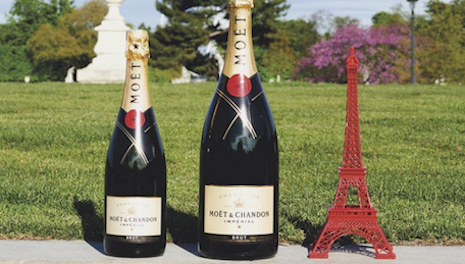- About
- Subscribe Now
- New York,
April 27, 2017

 Image courtesy of Moet & Chandon
Image courtesy of Moet & Chandon
Champagne is being threatened by the growth in popularity from rival sparkling wines, with prosecco leading the charge.
By 2021, sparkling wines, considered to be any "bubbly" not produced in the Champagne region of France, are expected to reach 219 million cases produced per year. For example, a report from just-drinks and The IWSR found that proscceo sparkling wine has become so popular with consumers that it has dethroned cava wines and is second in popularity when compared to Champagne.
"The high level of fragmentation in the prosecco category offers a wide range of alternatives to prosecco consumers," said Mauro Bonetti, trade marketing manager at Valdo Spumanti. "The main mission and the role of leading producers is to drive the recognition of qualitative added values of the DOCG, building up a stronger reputation of their brand."
Sparkling wines
The popularity of prosecco has become so prevalent that consumers are loyal to the name of the sparkling wine itself, as if it is its own brand. However, prosecco brands themselves lack brand loyalty.
Image courtesy of Altaneve
While prosecco and other sparkling wines as a whole are threatening Champagne, it is also likely their popularity could benefit the sparkling wine leader. Many consumers might be currently drawn to sparkling wines today and later on be interested in upgrading to Champagne.
The prosecco industry will need to build a high-end image for premium products while simultaneously maintaining its growth with lower price points.
France currently, and will continue to, account for more than half of Champagne sales, which will reach 28 million cases by 2021. The annual compound growth rate for champagne is 1.7 percent, according to the report.
However, non-European areas are becoming more popular and important for the Champagne market. The United States, Japan, Australia, Italy, Spain, Canada and Hong Kong are leading the way in profitability and size.
In terms of the sparkling wine market as a whole, Germany is currently a sector leader and will continue to be so into 2021. France and Spain will continue to follow closely in the upcoming years.
However, prosecco is also responsible for market growth, not just in regards to type of wine.
British markets may threaten Germany, as the U.K. has recently had a 10 percent growth rate within the last five years. If it continues to grow in this manner, the U.K. growth rate will exceed Germany’s sales.
Many consumers use prosecco as their go-to drink, believing it to be a “mini-luxury.”
Champagne and luxury
As the sparkling wine industry continues to grow, French luxury conglomerate LVMH has focused on its spirits business as the group begins an ecommerce entrance.
Although the sector is a pillar of LVMH’s businesses, the spirits category is an interesting ecommerce testing ground due to the strict distribution regulations of alcoholic beverages, and how each market enforces such mandates. LVMH’s ecommerce entrance will focus on the wine and spirits brands found under the Moët Hennessy banner (see more).
LVMH’s Moët & Chandon also recently communicated with rosé lovers through fun and flirtatious emoji stickers and customizable bottles for Valentine’s Day.
February marked the official beginning of rosé season, and with Valentine’s Day situated within its midst, Moët & Chandon targeted consumers headed for a romantic evening or a “Galentine’s Day” fete among friends. While Moët & Chandon’s often markets how sparkling wines are not only for New Year’s Eve celebrations, Valentine’s Day is one of the category’s primary times of year (see more).
"Consumers are heavily engaged with prosecco, and popularity within the market has prompted it to become a brand in itself," saidPete Fairclough, brand manager at Kingsland Drinks. "They have a loyalty to the name ‘prosecco’, thanks to its awareness and equity, but little loyalty to individual brands."
Share your thoughts. Click here